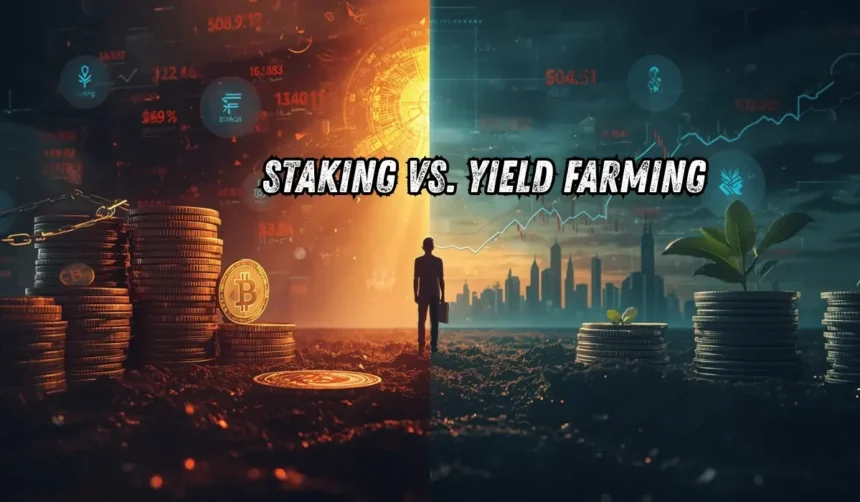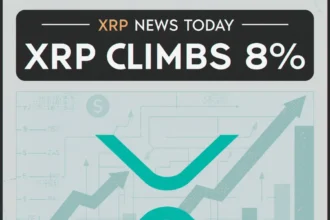Cryptocurrency in your wallet is of no use if left alone. In the world of decentralized finance (DeFi), there are many ways for investors to earn money using crypto assets. passive income.
staking and Yielding are two popular strategies that users can engage in to earn passive rewards. Both offer passive user income without active trading, but have different mechanics, risks, and reward potential.
What is staking?
Staking is the process of locking up a portion of a crypto asset for a specified period of time to support blockchain network operations using a proof-of-stake consensus mechanism. Once you participate, you will be rewarded with new coins or tokens depending on the amount of cryptocurrency you stake.
structure:
- To lock your cryptocurrency, smart contract on the proof-of-stake network
- By staking, you become a participant in the network’s consensus mechanism. Validators are required to confirm new transactions and create new blocks.
- The network randomly selects a validator to add to the next block on the chain. The probability of being selected increases depending on the amount of cryptocurrency staked.
- If a validator successfully adds a new block, he or she is rewarded with a new cryptocurrency or the same cryptocurrency that was staked.
- The staked asset acts as collateral. If a validator attempts to manipulate the blockchain, the entire staked crypto asset can be “reduced” as a penalty.
Staking features:
- Rewards are given in blockchain native tokens
- Staking usually provides more profitable and stable returns.
- Simple process and low risk
- Users must lock their assets for a certain period of time
- Network failures may result in the risk of losing staked assets
Popular staking coins include: Ethereum (ETH)Cardano (ADA), Solana (SOL), Polkadot (DOT).
What is yield farming?
Yield farming is another way to earn passive income through digital currency assets. Yield farming, often referred to as liquidity mining, is the process of adding coins to a liquidity pool, and in return, users (liquidity providers) receive yield in the form of transaction fees, governance tokens, and interest.
structure:
- Users (yield farmers) deposit their crypto assets into a liquidity pool. Decentralized (DeFi) platform.
- In exchange for being a liquidity provider, you are rewarded with tokens representing a share of the pool.
- Users earn rewards from several sources, including transaction fees, interest rates, and new tokens.
- Liquidity providers receive their rewards on time. There is no need for a central authority as the entire process is managed by smart contracts.
Features of yield Agriculture:
- Liquidity may fluctuate depending on market conditions and may affect the ease with which you can withdraw your funds.
- Yield farming is a high-risk, high-reward strategy that provides higher returns compared to traditional investments.
- Rewards may vary based on market conditions and demand for tokens
- Users must constantly monitor their investments to maximize profits.
- Participants must manage any temporary losses that may occur
Popular yield farming platforms: Binance, AAVE, Uniswap, PancakeSwap, Polygon, OKX.
| Features | staking | yield agriculture |
|---|---|---|
| complicated | simple and easy to use | Requires advanced active management |
| risk level | Low to moderate significant risk. Including token price fluctuations and network issues | Moderate to severe, weak to persistent. Losses, smart contract bugs, and high transaction fees. |
| potential profit | Lower but more predictable 5% to 15% AP (about) | Higher returns of 20% to 200% or more, but more volatile |
| liquidity | Assets are locked for a specific period of time | It’s more flexible, but it depends on your pool situation. |
| Ideal for these people | Long-term holders seeking stable income | Active DeFi users seeking higher return on investment |
Which strategy gives higher returns?
To understand which strategy is best for generating passive income, you first need to know your risk tolerance, time commitment, and investment goals. Not everyone is suitable for yield farming, and some users may not be satisfied with staking.
- Staking is perfect for users who prefer stability and predictable income with low risk and minimal involvement.
- Yield farming is perfect for investors who want to manage their risk and constantly monitor their positions for potential profits.
For long-term portfolio growth, a balanced approach that allocates part of your assets to staking and another part to harvest farming can balance security and profitability.
final thoughts
Staking and yield farming both play important roles in the DeFi ecosystem. These offer diverse opportunities for investors to earn passive income through assets they already own.
If you are a beginner, please try staking. You can get an idea about the ecosystem. Once you’re comfortable with staking, consider yield farming to take your profits to the next level.
To maximize your crypto portfolio, it’s important to understand how each strategy aligns with your financial goals and risk profile. Whether you prioritize security or rapid growth, DeFi offers flexible opportunities for everyone.
FAQ
Provides flexibility and accessibility. Unlike staking, yield farming typically does not require long lock-up periods. Users can enter and exit the pool at any time, giving them more flexibility to manage their funds and adapt to market conditions.
Staking can be a good strategy for users who prefer long-term investing.
Lending and borrowing platforms like AAVE allow users to lend their assets for interest or borrow as collateral.
Tron: APY 20%, Ethereum: APY 10%-15%, Avalanche: APY 8%-10%
No, staking is a long-term investment and the profits you get through trading are very high compared to the profits you get from staking. It depends on how good you are at trading






